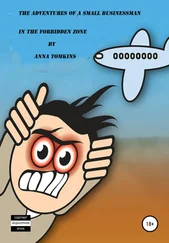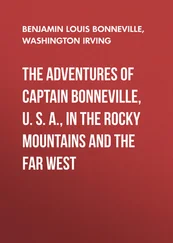I sit down heavily in the snow and try to think. This isn’t supposed to happen. Cable ganglines just don’t break. It’s so rare I don’t even have a spare section in the sled. After a few minutes of searching for the best solution, I decide to use the heavy line from one of my snow hooks. It’s not as strong as the cable sections so I’ll have to put it up front where it’ll only have to handle the leaders.
Tim stays around while I tie off dogs to trees and pull the broken section of gangline; after 30 minutes or so I finally get the new section in place and get everything hooked up again. The repaired gangline seems to be in good working order and I figure we can try to get moving again. Before we start off, Tim brings back a bag with 20 pounds of dog food and offers it to me in case I get stalled again. Having already spent an unexpected night on the trail I’m short of food and gratefully accept.
Tim pulls his hook and Maybelline and Bea fairly leap after his sled. This isn’t the same team that wouldn’t start back at the top of the hill. In fact, they’re running so well we repeatedly overrun Tim, forcing me to use the brake to keep a decent interval. Once again I start to feel like we’re really going to make it. We’re less than 15 miles from the checkpoint at Rainy Pass, where I can drop my problem dogs and sort everything out.
After another five miles we drop onto Long Lake, a mile of wind-polished snow and ice sunk between brooding forested hills. Tim stops in the middle of the lake to make some adjustments, as do I. But when he pulls out, Maybelline and Bea don’t follow. I yell to Tim to wait a minute, but he’s already out of earshot. I frantically try to get the team moving, but nothing works. The bomb has gone off again.
It’s only an hour until sunset and I know it’s going to get very cold out here in the middle of the lake. I do everything I can think of to get the team moving again, or at least to get the dogs to move the half-mile or so up to the trees at the end of the lake, where we can have some decent shelter and I can make a real fire.
The only result of my efforts to get moving is the worst tangle I’ve had so far as the males practically leap into the middle of the females, who obligingly turn around and come back to join in the fun. All 16 dogs are involved in a massive knot I can’t make a dent in. In the middle of it, Blues is getting bred again, this time by Blackie. I don’t even want to think about the population explosion that will swamp my place this summer.
Worse, the big males are fighting and before I can get them separated, Silvertip has cut Yankee’s eye and normally docile Socks has gotten Rocky’s muzzle so badly the indestructible Rock is snorting blood. I quickly determine both dogs will be all right, but I’ll have to have them checked by a vet when — or if — I make it to Rainy Pass.
While I’m tending to Rocky, Silvertip hooks up with Blues. I miss getting them apart by a couple of seconds as the orgy continues. It takes me an hour to get the tangle undone and the team lined out again, during which time Blues enjoys yet a third roll in the snow, this time with Yankee, whose eye is obviously not bothering him as much as I thought. I kick myself again for not dropping Blues and the others at Finger Lake.
By now it’s dark and the dogs simply won’t move no matter what I try. I even try to pull them ahead to the shelter of the shoreline but nothing works. Finally I give up in despair and start to hack holes in the thickly crusted snow for them to lie in to escape the rising wind and plunging temperatures. I put dog coats on the ones who need the most protection and then break out the cooker to make them some hot food.
I discover I only have five bottles of Heet and about 30 pounds of food left. This won’t last very long. In fact, I’ll be in a real survival situation by midday tomorrow because the dogs absolutely must have food and water. I figure in a pinch I can take the dogs one by one over to an abandoned cabin on the far shoreline, but there’s probably no food there, and the best I could hope for would be better shelter until somebody comes back for me.
It takes the ax to chop enough polished and hardened snow for the cooker, and two of my precious bottles of Heet only yield a few gallons of cold water. I mix up some of Tim’s food and give the dogs enough to get them through the night. I save some water and refill my makeshift Thermos; my thirst is reaching unquenchable proportions and I realize I’m badly dehydrated from my efforts, despite my attempts to drink water wherever possible.
But my main concern is keeping warm during the upcoming night. My thermometer already says it’s below zero and the wind is gusting to 10 or 15 miles an hour. I empty the sled and unstuff my arctic sleeping bag inside it. After making sure the dogs are resting as comfortably as can be expected, I take off my boots and crawl inside the sleeping bag still in my heavy overalls. I zip the bag shut and pull the flaps of the sled bag in over me.
I find I stay warm and cozy despite the wind moaning around the sled. Mentally, however, I’m a wreck. I can’t see any way to continue the race even if I can get the dogs into Rainy Pass. I’m so far behind there’s no way I can catch up, especially after I drop what will amount to at least a third of my team. I drift off into a troubled sleep about midnight as the crescent moon dips below the mountains to the west. I think to myself it’s a cold moon indeed.
March 8, 1995—The Iditarod: Rainy Pass Checkpoint
The wind howls fitfully across the lake all night, but I’m warm in my cocoon. I peek out once or twice; the dogs are sleeping soundly, their dark shapes dimly silhouetted against the lake’s frozen white surface. Their apparent good condition gives me some comfort.
The sun rises about seven and I slowly muster the courage to face the coming day. Up on the ridgeline above the lake, I can see big spruces whipping wildly in the wind blowing down from Rainy Pass. Here in the deep depression enfolding the lake, only an occasional gust penetrates and the temperature stays down around 10 below zero.
I quickly fire up the cooker with my last three bottles of Heet. I manage to get the water moderately hot, which I know the dogs will appreciate after their cold night on the ice. I mix the warm water in with the last of the dog food and give the dogs their breakfast. They all eat hungrily, which is a good sign in itself.
When they are finished I collect the bowls and begin the normal getting-ready-to-go routine, which I hope will get them focused on moving. After I pack the sled and finish hooking up, the team actually starts, although they stop after maybe 50 yards. Trying not to lose momentum, I keep switching leaders, but nothing seems to work and gradually the dogs start to lose interest and lie down in the rapidly warming sun.
I’m beyond hope. I have to assume this is the absolute, bitter end of my year of work; I can’t think of anything more I can do. I just sit down on the sled and wait for somebody to come back from the checkpoint to see why I’m not there yet. I even consider stomping out a message in the snow in case one of the Iditarod Air Force planes comes over.
About noon I finally hear the whine of snowmachines coming down the trail from Rainy Pass. It’s two of the trail sweeps who passed me yesterday. One says Jack Niggemyer, the race manager, has told them to get back down the trail and find out what happened to me. I figure if Jack has had to personally order my rescue I’m already counted out of the race. At least I can make a good show about getting into the Rainy Pass checkpoint to scratch.
The trail sweeps offer any assistance I need and I repeat my request of 24 hours ago — grab the leaders and lead them on foot while I drag the brake to hold back the males. I put Slipper and Bea up front; they are still my best bet despite their being wildly in heat and thus the ringleaders of the conspiracy that has defeated my best efforts. I figure they can have one last chance for glory as we make our final run into Rainy Pass Lodge.
Читать дальше












